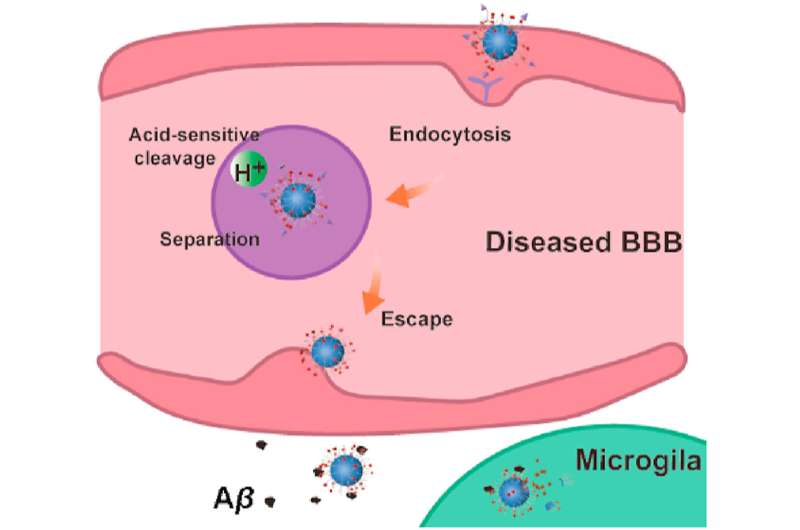
Insurmountable blood‒brain barrier (BBB) and complex pathological features are the key factors affecting the treatment of Alzheimer’s disease (AD). Poor accumulation of drugs in lesion sites and undesired effectiveness of simply reducing Aβ deposition or TAU protein need to be resolved urgently.
The authors of an article published in Acta Pharmaceutica Sinica B designed a nanocleaner with a rapamycin‒loaded ROS‒responsive PLGA core and surface modification with KLVFF peptide and acid‒cleavable DAG peptide (R@(ox‒PLGA)‒KcD). DAG can enhance the targeting and internalization effect of nanocleaner towards neurovascular unit endothelial cells in AD lesions, and subsequently detach from nanocleaner in response to acidic microenvironment of endosomes to promote the transcytosis of nanocleaner from endothelial cells into brain parenchyma. Then exposed KLVFF can capture and carry Aβ to microglia, attenuating Aβ‒induced neurotoxicity. Rapamycin, an autophagy promoter, is rapidly liberated from nanocleaner in the high ROS level of lesions to improve Aβ degradation and normalize inflammatory condition. This design altogether accelerates Aβ degradation and alleviates oxidative stress and excessive inflammatory response.
Source: Read Full Article
